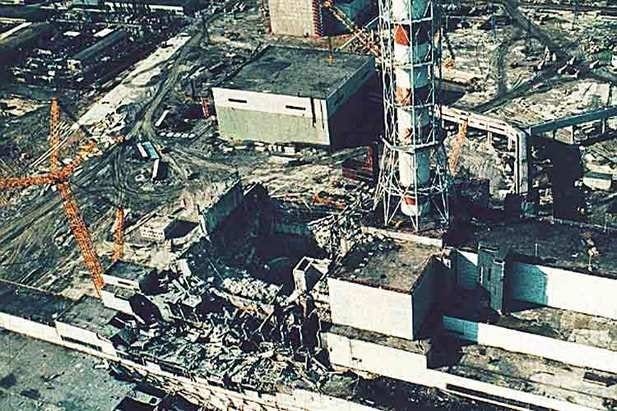Chernobyl Accident Meaning
A nuclear disaster occurred at the Chernobyl nuclear power plant 3 km from the Ukrainian city of Pripyat, just over 100 km from Kiev. These facilities have gone down in history for what happened there on 26 April 1986: the explosion of a nuclear reactor. As a result of this catastrophe, the beginning of the end of communism in the USSR began and today Pripyat is a ghost town abandoned due to the devastating effects of radioactivity.
Causes of the catastrophe
The nuclear accident occurred due to a series of circumstances. Firstly, there was a series of human errors at the very time when tests were being carried out to ensure the safety of the nuclear power plant. After the accident, it became known that the nuclear power plant was not well designed and that the safety measures were totally inadequate.
According to estimates, the effects of radiation caused the immediate death of 31 people, between 30,000 and 60,000 died later and the inhabitants of the area suffered from all kinds of diseases.
In the days following the accident, the Soviet authorities tried to minimize its impact in the public eye, but Mikhail Gorbachev finally admitted the true magnitude of the disaster. However, the poor handling of the accident in the midst of the perestroika process accelerated the disintegration of the Soviet Union.
The toxic cloud caused by the reactor explosion affected the territory of Ukraine, Belarus, and Russia in particular, and to a lesser extent the whole of Western Europe.
The natural areas near the accident were completely devastated, to the point that the place was renamed the Red Forest because of the new colour of the trees. In addition, the waters and crops were also highly contaminated, especially by radioactive caesium.
A large number of humanitarian organizations provided their assistance to help the population, especially the affected children.
Thirty years after the disaster, more than 5 million people live in areas with high levels of radiation. To prevent nuclear elements from causing harmful effects, the remains of the atomic reactors are sealed in the so-called Chernobyl Sarcophagus. A new sarcophagus was built in November 2016 at a cost of approximately 1.5 billion euros.
Chernobyl Accident Meaning in Hindi
यूक्रेनी शहर प्रिप्यात से 3 किमी दूर चेरनोबिल परमाणु ऊर्जा संयंत्र में परमाणु आपदा हुई, जो कीव से लगभग 100 किमी दूर है। 26 अप्रैल 1986 को वहां जो हुआ, उसके लिए ये सुविधाएं इतिहास में दर्ज हो गई हैं: एक परमाणु रिएक्टर में विस्फोट। इस आपदा के परिणामस्वरूप, यूएसएसआर में साम्यवाद के अंत की शुरुआत हुई और आज प्रिप्यात रेडियोधर्मिता के विनाशकारी प्रभावों के कारण एक भूतिया शहर बन गया है।
आपदा के कारण
परमाणु दुर्घटना कई परिस्थितियों के कारण हुई। सबसे पहले, परमाणु ऊर्जा संयंत्र की सुरक्षा सुनिश्चित करने के लिए परीक्षण किए जाने के समय कई मानवीय त्रुटियाँ हुईं। दुर्घटना के बाद, यह पता चला कि परमाणु ऊर्जा संयंत्र को अच्छी तरह से डिज़ाइन नहीं किया गया था और सुरक्षा उपाय पूरी तरह से अपर्याप्त थे।
अनुमानों के अनुसार, विकिरण के प्रभाव से 31 लोगों की तत्काल मृत्यु हो गई, बाद में 30,000 से 60,000 लोगों की मृत्यु हो गई और क्षेत्र के निवासी सभी प्रकार की बीमारियों से पीड़ित हो गए।
दुर्घटना के बाद के दिनों में, सोवियत अधिकारियों ने लोगों की नज़र में इसके प्रभाव को कम करने की कोशिश की, लेकिन मिखाइल गोर्बाचेव ने अंततः आपदा की वास्तविक भयावहता को स्वीकार किया। हालाँकि, पेरेस्त्रोइका प्रक्रिया के बीच दुर्घटना से निपटने में खराब तरीके से सोवियत संघ के विघटन को गति मिली।
रिएक्टर विस्फोट के कारण उत्पन्न विषाक्त बादल ने विशेष रूप से यूक्रेन, बेलारूस और रूस के क्षेत्र को प्रभावित किया, और कुछ हद तक पूरे पश्चिमी यूरोप को प्रभावित किया।
दुर्घटना के आस-पास के प्राकृतिक क्षेत्र पूरी तरह से तबाह हो गए, इस हद तक कि पेड़ों के नए रंग के कारण इस जगह का नाम बदलकर रेड फ़ॉरेस्ट कर दिया गया। इसके अलावा, पानी और फसलें भी अत्यधिक दूषित हो गई थीं, विशेष रूप से रेडियोधर्मी सीज़ियम के कारण।
बड़ी संख्या में मानवीय संगठनों ने लोगों, खासकर प्रभावित बच्चों की मदद के लिए अपनी सहायता प्रदान की।
आपदा के तीस साल बाद, 5 मिलियन से अधिक लोग उच्च स्तर के विकिरण वाले क्षेत्रों में रहते हैं। परमाणु तत्वों को हानिकारक प्रभाव पैदा करने से रोकने के लिए, परमाणु रिएक्टरों के अवशेषों को तथाकथित चेरनोबिल सरकोफेगस में सील कर दिया जाता है। नवंबर 2016 में लगभग 1.5 बिलियन यूरो की लागत से एक नया सरकोफेगस बनाया गया था।
